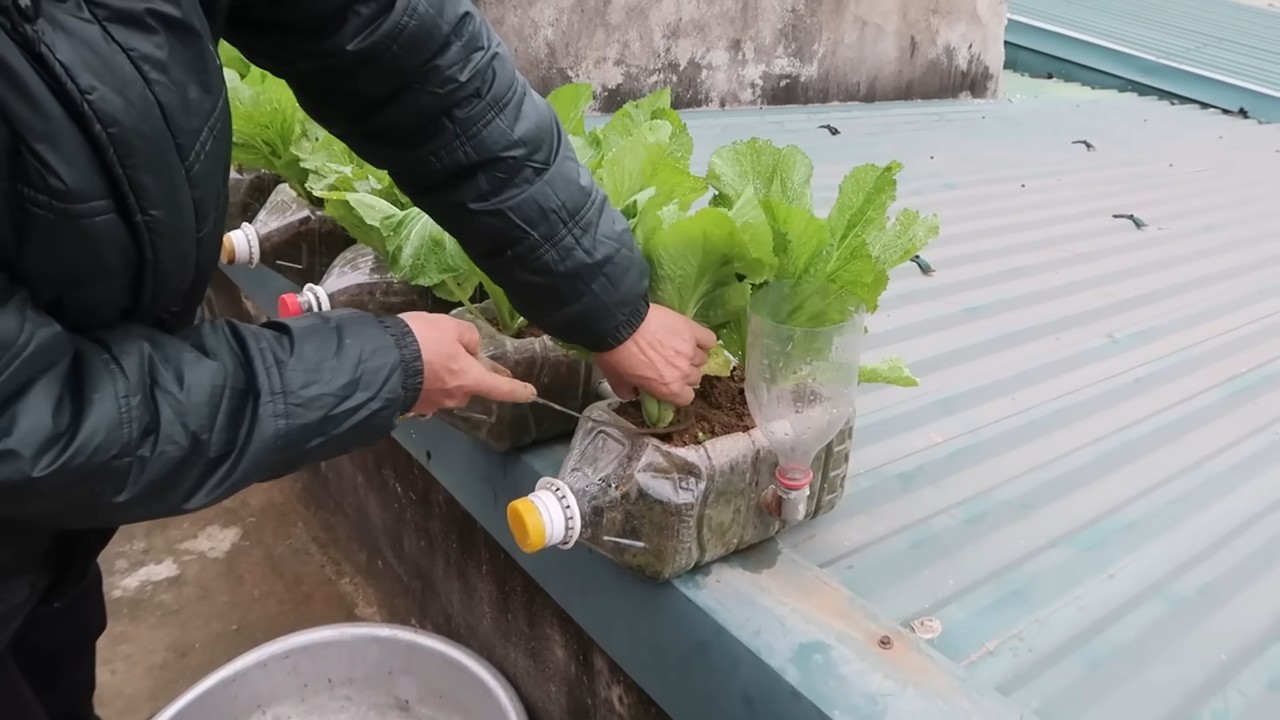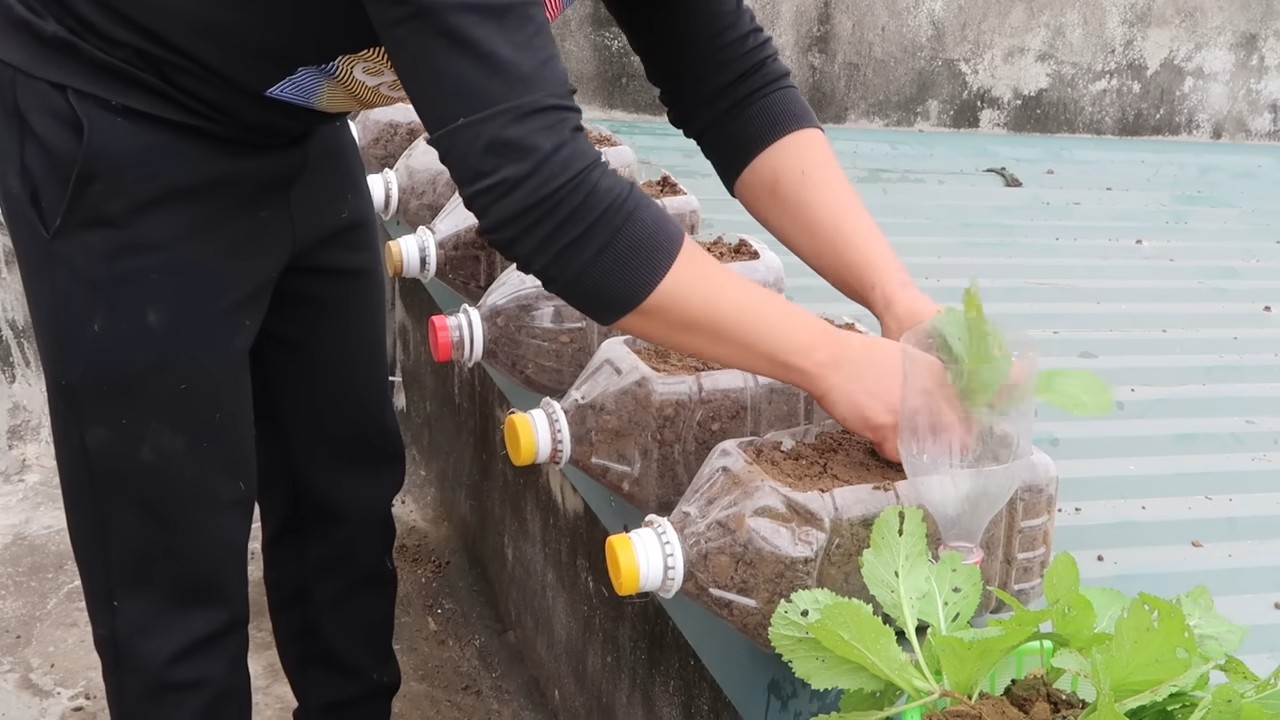Fresh vegetable storage hacks are the unsung heroes of a thriving kitchen and a happy wallet! Have you ever bought a beautiful bounty of fresh produce, only to find it wilted and sad in your crisper drawer a few days later? I know I have, and it’s incredibly frustrating. It’s like throwing money straight into the compost bin!
The art of preserving food, including vegetables, has been around for centuries. From ancient root cellars to modern refrigeration, humans have always sought ways to extend the life of their harvest. Think about it – preserving food allowed communities to survive through harsh winters and lean times. While we might not be facing the same survival challenges today, minimizing food waste is more important than ever, both for our budgets and the planet.
That’s why I’m so excited to share these simple, yet effective, fresh vegetable storage hacks with you. These aren’t just random tips; they’re tried-and-true methods that will help you keep your veggies crisp, flavorful, and ready to use for longer. Imagine enjoying perfectly crunchy carrots weeks after buying them, or having vibrant spinach on hand for a last-minute salad. No more slimy cucumbers or mushy bell peppers! These DIY tricks will not only save you money by reducing food waste, but they’ll also make meal prepping easier and more enjoyable. Let’s dive in and unlock the secrets to keeping your vegetables fresher, longer!

DIY Fresh Vegetable Storage Hacks: Keep Your Produce Fresher Longer!
Hey there, fellow food lovers! I’m always on the hunt for ways to reduce food waste and save money, and one of the biggest culprits in my kitchen used to be wilting vegetables. So, I’ve experimented with a bunch of DIY storage hacks, and I’m excited to share the ones that have worked wonders for me. Get ready to say goodbye to soggy lettuce and hello to crisp, vibrant veggies!
General Principles for Vegetable Storage
Before we dive into specific veggies, let’s cover some ground rules that apply to almost everything:
* Don’t wash until you’re ready to use: Moisture is the enemy! Washing vegetables before storing them creates a breeding ground for mold and bacteria.
* Remove rubber bands and ties: These restrict airflow and can cause vegetables to rot faster.
* Store in the crisper drawers: Your refrigerator’s crisper drawers are designed to maintain optimal humidity levels for produce. One drawer is usually for high humidity (leafy greens, herbs) and the other for low humidity (fruits, vegetables that produce ethylene gas).
* Separate ethylene producers from ethylene-sensitive produce: Ethylene is a natural gas that causes fruits and vegetables to ripen (and eventually spoil). Apples, bananas, avocados, tomatoes, and melons are big ethylene producers. Keep them away from leafy greens, broccoli, carrots, and other ethylene-sensitive veggies.
* Use breathable containers: Plastic bags can trap moisture, so opt for reusable produce bags, perforated plastic bags, or containers with ventilation.
* Check regularly and remove any spoiled pieces: One bad apple (or carrot!) can spoil the whole bunch.
Storing Leafy Greens: Lettuce, Spinach, Kale, and More
Leafy greens are notorious for wilting quickly, but these hacks will keep them crisp and fresh for much longer.
Hack 1: The Paper Towel Trick
This is my go-to method for storing lettuce and spinach.
1. Wash and thoroughly dry the greens: Use a salad spinner or pat them dry with paper towels. This is the *only* time you’ll wash them before storing!
2. Line a container with paper towels: I use a large, airtight container, but a reusable produce bag works too. The paper towels will absorb excess moisture.
3. Place the greens in the container: Don’t pack them too tightly.
4. Top with another layer of paper towels: This helps absorb moisture from the top as well.
5. Seal the container and store in the crisper drawer: Replace the paper towels every few days if they become damp.
Hack 2: The Water Bath Method
This works best for reviving slightly wilted greens or keeping herbs fresh.
1. Trim the ends of the stems: This helps the greens absorb water more easily.
2. Fill a jar or glass with water: Add enough water to cover the stems.
3. Place the greens in the water: Make sure the leaves are not submerged.
4. Cover loosely with a plastic bag: This creates a humid environment.
5. Store in the refrigerator: Change the water every day or two.
Hack 3: The Pillowcase Method
This is a great eco-friendly option for storing large quantities of greens.
1. Dampen a clean pillowcase: Wring out any excess water.
2. Place the greens inside the pillowcase: Don’t overcrowd it.
3. Store in the crisper drawer: The damp pillowcase will keep the greens hydrated.
Storing Root Vegetables: Carrots, Potatoes, Onions, and Garlic
Root vegetables are generally more durable than leafy greens, but proper storage is still key to preventing sprouting and spoilage.
Hack 1: The Sand Method for Carrots
This is an old-fashioned method that really works!
1. Find a container: A bucket, plastic bin, or even a large flowerpot will do.
2. Layer the bottom with damp sand: The sand should be moist but not soaking wet.
3. Arrange the carrots in the sand: Make sure they’re not touching each other.
4. Cover the carrots with more damp sand: Completely bury them.
5. Store in a cool, dark place: A basement or garage is ideal.
Hack 2: The Paper Bag Method for Potatoes
Potatoes need to be stored in a dark, cool, and well-ventilated place.
1. Find a paper bag: A brown paper grocery bag works perfectly.
2. Poke holes in the bag: This allows for ventilation.
3. Place the potatoes in the bag: Don’t overcrowd them.
4. Fold the top of the bag over: This helps keep out light.
5. Store in a cool, dark place: Avoid storing potatoes near onions, as they can cause each other to spoil faster.
Hack 3: The Mesh Bag Method for Onions and Garlic
Onions and garlic need to breathe, so mesh bags are ideal.
1. Find a mesh bag: You can often find these at the grocery store or use a reusable produce bag with a mesh panel.
2. Place the onions or garlic in the bag: Don’t overcrowd them.
3. Hang the bag in a cool, dry, and well-ventilated place: A pantry or cupboard is usually a good option.
Storing Herbs: Parsley, Cilantro, Basil, and More
Herbs are delicate and can wilt quickly, but these hacks will keep them fresh and flavorful.
Hack 1: The Water Glass Method
This is similar to the water bath method for leafy greens.
1. Trim the ends of the stems: This helps the herbs absorb water more easily.
2. Fill a glass or jar with water: Add enough water to cover the stems.
3. Place the herbs in the water: Make sure the leaves are not submerged.
4. Cover loosely with a plastic bag: This creates a humid environment.
5. Store in the refrigerator: Change the water every day or two.
Hack 2: The Damp Paper Towel Method
This works well for herbs that don’t like to be submerged in water, like basil.
1. Wrap the herbs in a damp paper towel: Make sure the paper towel is not soaking wet.
2. Place the wrapped herbs in a plastic bag: Leave the bag slightly open for ventilation.
3. Store in the refrigerator: Replace the paper towel every few days if it becomes dry.
Hack 3: The Freezing Method
This is a great way to preserve herbs for longer-term storage.
1. Wash and dry the herbs: Remove any damaged leaves.
2. Chop the herbs: You can chop them finely or leave them in larger pieces.
3. Place the chopped herbs in ice cube trays: Fill each cube about halfway.
4. Add water or olive oil to the trays: This will help preserve the flavor and prevent freezer burn.
5. Freeze the trays: Once the cubes are frozen, transfer them to a freezer bag.
6. Use the frozen herb cubes as needed: Add them directly to soups, sauces, or stews.
Storing Other Vegetables: Broccoli, Cauliflower, Peppers, and More
These vegetables have their own unique storage needs.
Hack 1: Broccoli and Cauliflower
These cruciferous vegetables need to breathe.
1. Store in a perforated plastic bag: You can buy these at the grocery store or poke holes in a regular plastic bag.
2. Place a paper towel in the bag: This will absorb excess moisture.
3. Store in the crisper drawer: Use the high-humidity drawer.
Hack 2: Bell Peppers
Bell peppers are sensitive to ethylene gas.
1. Store in a perforated plastic bag: This allows for ventilation.
2. Keep away from ethylene-producing fruits and vegetables: Store them in a separate crisper drawer.
Hack 3: Asparagus
Asparagus is best stored upright in water, like flowers.
1. Trim the ends of the stems: This helps the asparagus absorb water more easily.
2. Fill a jar or glass with water: Add enough water to cover the stems.
3. Place the asparagus in the water: Make sure the tips are not submerged.
4. Cover loosely with a plastic bag: This creates a humid environment.
5. Store in the refrigerator: Change the water every day or two.
Hack 4: Celery
Celery can get limp quickly, but this hack will keep it crisp.
1.

Conclusion
So, there you have it! Ditching the wilting greens and soggy carrots is now within your grasp. This simple, yet incredibly effective, DIY fresh vegetable storage hack is more than just a way to keep your produce crisp; it’s a game-changer for reducing food waste, saving money, and enjoying the vibrant flavors of fresh vegetables for longer. Think about it: fewer trips to the grocery store, less guilt about throwing away spoiled food, and more delicious, nutritious meals on your table.
This isn’t just about extending the shelf life of your veggies; it’s about maximizing their nutritional value. When vegetables are stored properly, they retain more of their vitamins and minerals, ensuring you’re getting the most out of every bite. Plus, the crispier and fresher your vegetables are, the more appealing they become, making it easier to incorporate them into your daily diet.
Don’t be afraid to experiment with variations on this method. For example, for delicate leafy greens like spinach or lettuce, consider adding a paper towel to the container to absorb excess moisture. For root vegetables like carrots and beets, a slightly damp cloth can help maintain their hydration. You can even tailor the container size to the specific vegetables you’re storing, ensuring they have enough space without being overcrowded.
Beyond the basic method, consider the specific needs of each vegetable. Some, like asparagus, benefit from being stored upright in a jar with a little water, mimicking their natural growing environment. Others, like tomatoes, are best stored at room temperature to preserve their flavor. Researching the optimal storage conditions for each type of vegetable can further enhance the effectiveness of this DIY hack.
The beauty of this DIY fresh vegetable storage hack lies in its simplicity and adaptability. It’s a small change that can make a big difference in your kitchen and your overall lifestyle. It’s about being more mindful of the food we consume and taking proactive steps to reduce waste and maximize freshness.
We wholeheartedly encourage you to give this method a try. It’s easy, affordable, and incredibly rewarding. Once you experience the difference it makes, you’ll wonder how you ever lived without it.
And most importantly, we want to hear about your experiences! Share your tips, tricks, and variations in the comments below. Let us know which vegetables you’ve found this method to be most effective for, and any challenges you’ve encountered along the way. Your feedback will not only help us improve this guide but also inspire others to embrace this simple yet powerful way to keep their vegetables fresh and delicious. Let’s build a community of mindful eaters who are committed to reducing food waste and enjoying the vibrant flavors of fresh, properly stored vegetables. So go ahead, give it a try, and let us know what you think!
Frequently Asked Questions
What types of vegetables does this storage method work best for?
This DIY fresh vegetable storage hack is particularly effective for a wide range of vegetables, including leafy greens like lettuce, spinach, and kale; cruciferous vegetables like broccoli, cauliflower, and Brussels sprouts; root vegetables like carrots, beets, and radishes; and even some fruits like berries. However, the specific storage needs of each vegetable may vary slightly. For example, leafy greens benefit from a slightly damp environment, while root vegetables prefer a drier environment. Experimenting with different vegetables and adjusting the method accordingly is key to achieving optimal results.
How long will this method keep my vegetables fresh?
The lifespan of your vegetables will vary depending on the type of vegetable and its initial freshness. However, this method can typically extend the shelf life of most vegetables by several days, and in some cases, even weeks. For example, leafy greens that typically wilt within a few days can often last for a week or more when stored properly using this method. Root vegetables can last for several weeks, or even months, when stored in a cool, dark place using this technique. Regularly checking your vegetables and removing any that are starting to spoil will help to prevent the spread of spoilage to the other vegetables.
What kind of container should I use?
Airtight containers are ideal for this storage method, as they help to prevent moisture loss and maintain a stable environment for your vegetables. Glass containers, plastic containers, or even reusable storage bags can be used, as long as they are airtight. The size of the container should be appropriate for the amount of vegetables you are storing, ensuring that they have enough space without being overcrowded. Avoid using containers that are too large, as this can lead to excess moisture buildup.
Is it necessary to wash the vegetables before storing them?
It’s generally recommended to wash vegetables before storing them, as this helps to remove dirt, debris, and any potential contaminants. However, it’s important to dry the vegetables thoroughly before placing them in the container, as excess moisture can promote spoilage. A salad spinner or a clean kitchen towel can be used to dry the vegetables. If you’re not planning to use the vegetables immediately, you can also wait to wash them until just before you’re ready to use them.
Can I use this method for all types of produce?
While this method is highly effective for many types of vegetables, it may not be suitable for all types of produce. Some fruits, like bananas and avocados, are best stored at room temperature. Other fruits, like apples and pears, can be stored in the refrigerator, but they may not benefit from being stored in an airtight container. It’s important to research the optimal storage conditions for each type of produce to ensure that you’re storing them properly.
What if I don’t have airtight containers?
If you don’t have airtight containers, you can still use this method, but the results may not be as dramatic. You can use resealable plastic bags or even wrap the vegetables in plastic wrap. However, it’s important to ensure that the vegetables are well-sealed to prevent moisture loss. You can also try placing the vegetables in a bowl and covering it with a damp cloth. The damp cloth will help to maintain a humid environment, which can help to keep the vegetables fresh.
How often should I check the vegetables?
It’s a good idea to check your vegetables every few days to ensure that they are still fresh. Remove any vegetables that are starting to spoil, as they can contaminate the other vegetables. You can also refresh the moisture in the container by adding a few drops of water or replacing the damp paper towel.
Can I store different types of vegetables together in the same container?
While it’s generally safe to store different types of vegetables together in the same container, it’s important to be aware that some vegetables can release ethylene gas, which can accelerate the ripening process of other vegetables. For example, apples, bananas, and tomatoes are known to release ethylene gas. If you’re storing these vegetables with other vegetables, it’s best to keep them separate or to use a container with good ventilation.
What if my vegetables still wilt or spoil quickly?
If your vegetables are still wilting or spoiling quickly, there are a few things you can try. First, make sure that you’re storing the vegetables at the correct temperature. Most vegetables should be stored in the refrigerator, but some, like tomatoes, are best stored at room temperature. Second, make sure that you’re not overfilling the container. Overcrowding can restrict airflow and lead to spoilage. Finally, make sure that you’re using fresh vegetables. Vegetables that are already starting to spoil will not last as long, even when stored properly.
Is this method environmentally friendly?
Yes, this DIY fresh vegetable storage hack is an environmentally friendly way to reduce food waste and save money. By extending the shelf life of your vegetables, you’ll be throwing away less food, which reduces your carbon footprint and saves you money on groceries. You can also use reusable containers and storage bags, which further reduces your environmental impact.




Leave a Comment